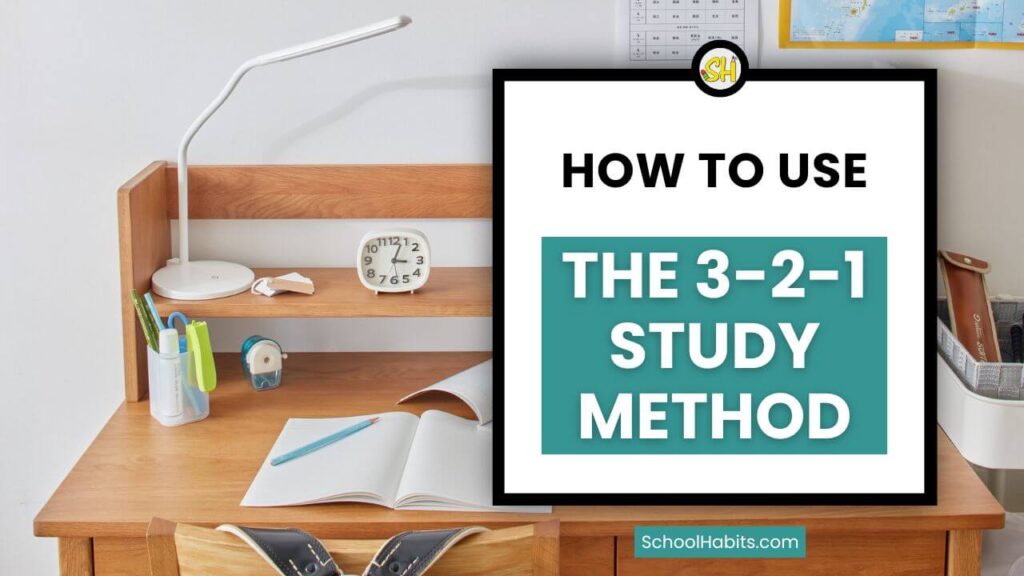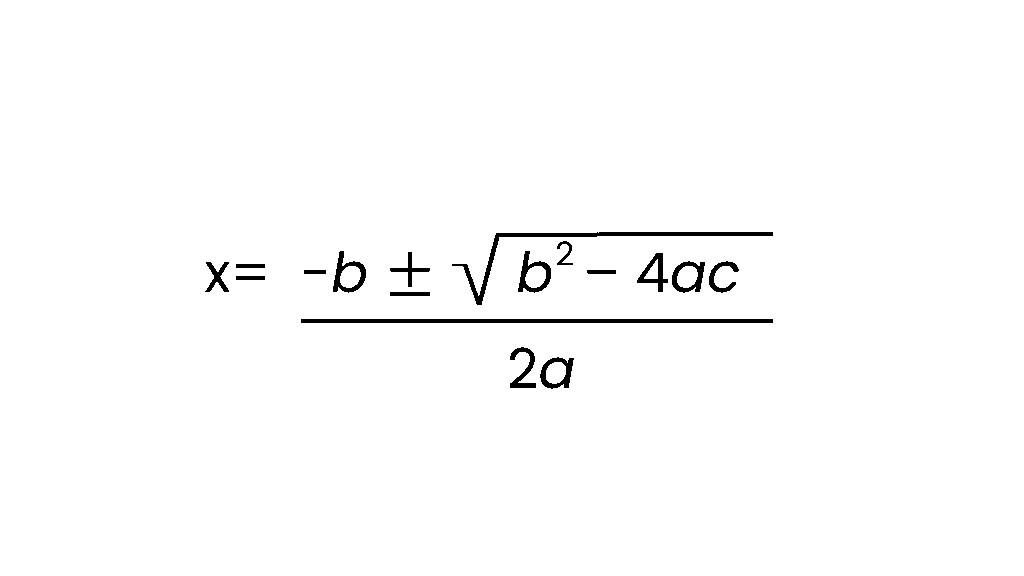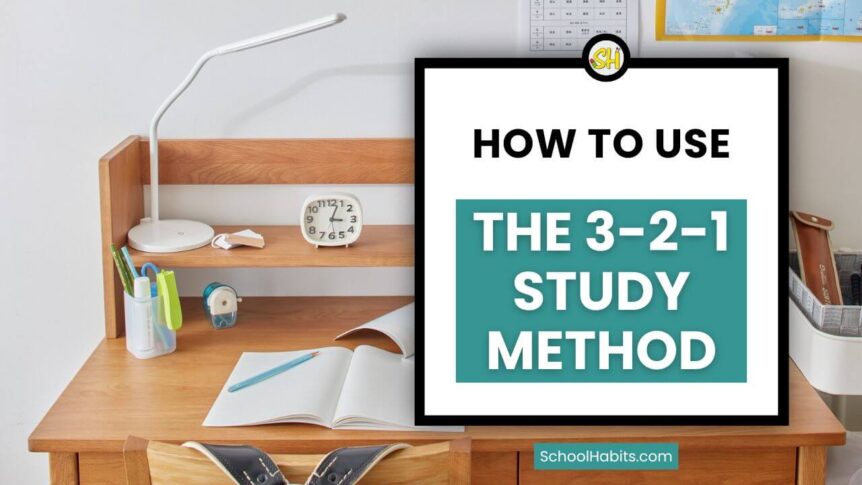
By Katie Azevedo, M.Ed.
There’s no one study method that works perfectly for every student and every type of content. In fact, the best students often combine multiple study strategies and vary their techniques depending on their material.
The more study methods you know, the more you can combine them. And this is an incredible approach to studying, as long as the study techniques you’re using are based on active recall.
In this blog post, I teach you how to use the 3-2-1 study method. This is a fun and effective study strategy that works with many kinds of material, and it’s worth adding to your study kit.
What is the 3-2-1 Study Method?
The 3-2-1 study method is a way of reviewing material from multiple angles: reading, speaking, and writing. Any study strategy that allows you to review the content from more than one angle can be effective.
In a nutshell, the 3-2-1 Study method has three steps:
- Read a concept three times
- Speak the concept two times (from memory)
- Write the concept one time (from memory)
How to Use the 3-2-1 Method to Study
You can use the 3-2-1 study method to study many types of content, from simple material to more complex material. It’s an effective technique to use early on in the study process (when you’re just getting started with your study sessions) or as a final review right before your exam.
The 3-2-1 study method is also effective as a way to review material throughout a unit, and not necessarily as part of a deliberate study session. When we take five to ten minutes a day to return to our notes that we took during that day‘s classes, we can use the 3-2-1 method to gradually familiarize ourselves with what we’re learning. That way, we set ourselves up for less studying overall.
Below are the exact steps for how to use the 3-2-1 study method. Once you understand the basics, you can tweak the process to match your preferences, as long as you don’t change the active recall nature of the process.
The Steps of the 3-2-1 Study Method
1. Choose a single concept to study.
This could be a vocab word, a diagram/process, an idea, or something specific you’re learning. Think of this as what you would put on one side of a flashcard if you were making flashcards.
2. Read the explanation, definition or answer three times.
This might be something you wrote in your notes, something from a textbook, or something from a resource your teacher gave you. Read it out loud. Make sure you understand what it means. (If you don’t understand the meaning of what you’re reading, pause and figure that out first; then return to this step.)
You shouldn’t be reading anything more than a few sentences. Remember, the 3-2-1 method is for learning concepts, not for learning whole novels or textbook chapters. The length of what you’re reading should be similar to what you’d write on the back side of a flashcard if you were making flashcards.
3. Speak the explanation, definition, or answer two times, without looking at anything.
The magic of the 3-2-1 method comes from the fact that it’s based on active recall. However, this method only utilizes active recall if you attempt to speak the information WITHOUT looking at anything.
Here’s how: immediately after reading the information two times (step 2 above), cover the information with your hand or look away from it. Out loud (not in your head), speak the information the best you can use just your memory. It doesn’t have to be perfect. It doesn’t have to be word-for-word. Paraphrasing is just fine. Do this two times in a row, and then check what you said against the original information.
4. Write the information once.
Again, do this without looking at the original information. It doesn’t have to be exact. Check what you wrote down against the original information.
5. Repeat the process with a new concept.
Keep going until you can confidently and accurately speak and write all the concepts you’re learning, without looking at the original content.
Example of the 3-2-1 Study Method
Below are two examples of the 3-2-1 study method in action, so you can better understand how this strategy can work for various kinds of content.
Example 1: History Test (World War II)
1. Choose a single concept to study: The causes of World War II.
2. Read it three times: Read your notes that say:
“World War II began because of several key factors: the harsh terms of the Treaty of Versailles, economic depression and instability in Europe, the rise of totalitarian leaders like Hitler and Mussolini, and the failure of appeasement policies.”
Read this explanation out loud three times, making sure you understand what each cause means.
3. Speak it two times (from memory): Look away from your notes and explain the causes of World War II out loud. Try something like:
“The main causes were the Treaty of Versailles, the Great Depression, the rise of totalitarian leaders, and failed attempts at appeasement.”
Do this two times, checking afterward to see what you missed or got right.
4. Write it one time (from memory): Without looking, write a short summary of the causes. Then compare it to your notes and fill in anything you left out.
5. Repeat: Move on to another concept, like the major Allied and Axis powers or the outcome of a specific battle.
Example 2: Math Test (Quadratic Formula)
1. Choose a single concept to study: The quadratic formula.
2. Read it three times: Read your notes that say:
“The quadratic formula is used to find the roots of a quadratic equation:

Read this formula out loud three times, paying attention to what each part represents.
3. Speak it two times (from memory): Cover your notes and say the formula out loud from memory two times. If you miss anything, try again and then check yourself.
4. Write it one time (from memory): On paper, write out the quadratic formula without looking. Then compare it to the original and correct any errors.
5. Repeat: Choose another concept you need to learn for your test, such as how to calculate the discriminant or how to interpret the number of real roots.
Why the 3-2-1 Study Method Works
The 3-2-1 study method works for three reasons. First and most importantly, it uses active recall. Active recall is the most effective study technique there is. Active recall-based study methods ask you to “recall” material without looking at it. Studying like this can sometimes be uncomfortable because there is usually a moment when you’re strongly compelled to peek at the answer, but the magic is on the other side of that resistance.
When you’re using the 3-2-1 study method, you’re engaging in active recall three times: twice when you speak the material and once when you write it.
The 3-2-1 study method is also effective because you’re engaging with the material from three different angles. I already mentioned this at the top of the post, but approaching content from more than one angle is a great idea. In the 3-2-1 method, you’re reading it (angle #1), speaking it (angle #2) and writing it (angle #3). These three different approaches, or output methods, help our brains better understand and store what we’re learning.
Finally, the 3-2-1 study method works because it uses repetition. Repetition is another key to learning. That’s why I’m always reminding students to use spaced repetition when they study. With the 3-2-1 study method, you’re repeating each concept at least six times (3+2+1), and then ideally repeating that whole process multiple times.
It’s the combination of active recall, multiple output methods and repetition that make the 3-2-1 method so effective.
Who Should Use the 3-2-1 Method?
The 3-2-1 method is for any student in any grade. The only students it’s not for are those who can’t yet read or write. But even graduate students learning advanced concepts can mix up their study routines with this technique, because it works on any kind of content that can be broken down and put on flashcards.
3 Pro Tips to Take the 3-2-1 Study Method to the Next Level
The 3-2-1 study method works well by itself, as explained in the section above called How to Use the 3-2-1 Method to Study. But below, you can find a few pro tips to take this technique to the next level:
1. Mix the 3-2-1 method with spaced repetition. To do this, you would use the 3-2-1 method during multiple study sessions over multiple days on the same material. To get the most out of this strategy, keep your daily study sessions between 25 and 45 minutes long.
2. Mix the 3-2-1 method with another study strategy. Some good options are the Feynman Technique or mind mapping.
3. Take notes with the 3-2-1 method in mind. Many students get stuck with step one of the 3-2-1 method, which is “choose a single concept to study at a time.” When you’re staring at a big block of notes (or no notes), it’s hard to know what a “single” concept is and how to make that information work for the 3-2-1 method. But if you take notes using the strategy I teach you in my Note-Taking Power System program, using those notes for the 3-2-1 method is ultra-easy.

